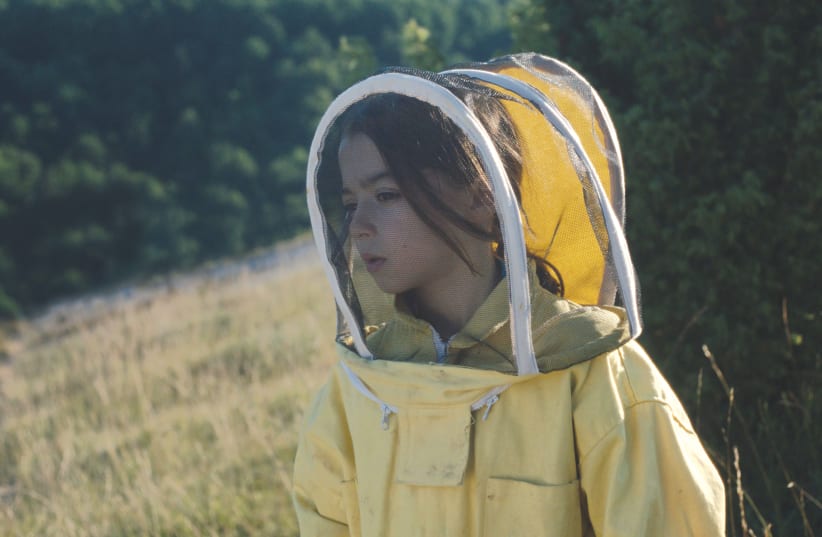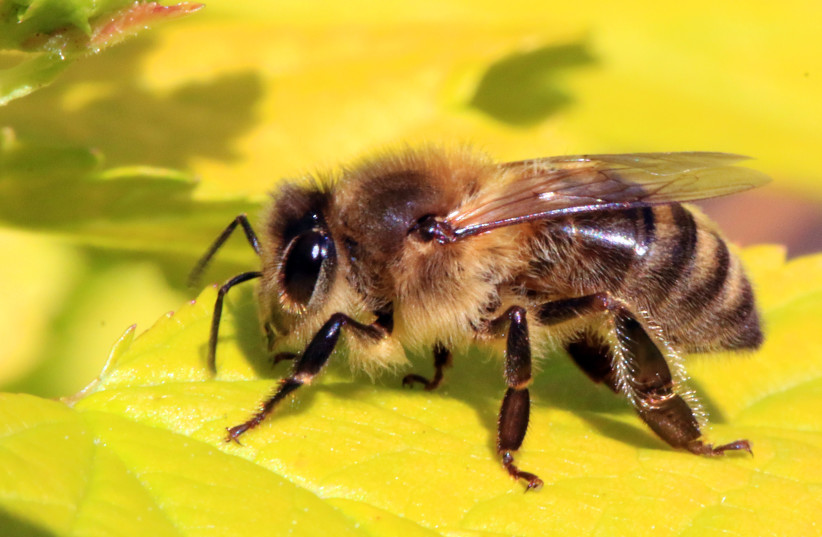Set in the heart of Spain’s gorgeous Basque country, Estibaliz Urresola Solaguren’s feature-film debut, 20,000 Species of Bees, which opens on January 11 in theaters throughout Israel, is intermittently engaging, but overlong and poorly structured. The heart of the story is about an eight-year-old child grappling with gender identity, but the movie veers in so many directions that it loses focus, and while there are some sweet moments, it lacks any real sting.
The movie, which received a Silver Bear for Best Leading Performance for its young star, Sofia Otero, at the Berlin International Film Festival in 2023, is about a Spanish family living in French Basque country. The parents, Gorka (Martxelo Rubio) and Ane (Patricia Lopez Arnaiz), a sculptor struggling to balance her career with motherhood, are having marital problems. Although they don’t tell their three children, they have decided to spend the summer apart, and Ane takes them to stay with her family in the Spanish Basque region.
The movie isn’t really about their troubled marriage, but about their eight-year-old child, Aitor (Otero), a boy who doesn’t feel like a boy, who wants people to call him Lucia and refer to him as she, and longs to wear a dress to a cousin’s baptism. Ane, too stressed and impatient to cope, tells Aitor/Lucia, who usually goes by the nickname, Coco, that, “There are no girl’s things or boy’s things.”
Ane is busy getting to work on her sculptures, which are inspired by the overshadowing work of her late father, a renowned artist whose sculptures are recreated in beeswax and sold to his adoring public. Ane’s Aunt Lourdes (Ane Gabarain) is a beekeeper, a family tradition. Lourdes is the cool, no-nonsense aunt we would all love to have, and she accepts Coco totally, using the child’s preferred pronouns, taking her for swims in an idyllic lake, and, crucially, teaching Coco the way of beekeeping.
The bees
The bees, in the aunt’s telling, represent being one with nature, acceptance, and healing (she is a healer, and puts bees on people to ease their pain – and these bees never sting anyone). This is in contrast to Coco’s grandmother, Lita (Itziar Lazkano), who is warm and loving – everyone in Basque country is, it seems – but who criticizes her grandchild’s long hair and spouts Christian proverbs.
As the summer goes on, Coco faces more challenges and dilemmas, and Lourdes’s support is not always enough to smooth things over. Ane, meanwhile, trying to insure some kind of independent life for herself, is applying for a job as an art teacher, but, short on inspiration, submits some of her father’s sculptures, passing them off as her own.
It also turns out that her father used local girls as models for this series, called the Sylphids – there are many sylph and mermaid metaphors here, although the overarching one is about bees and their care – and that he took nude photos of them, which Ane’s older daughter discovers in his workshop one day. We learn that there was a scandal about the elderly sculptor and his underage models and that his wife turned a blind eye to it.
That’s a great deal of story, issues, and metaphors for one movie and just when you begin to be engrossed in one storyline and one point of view, the film jumps to another. Eventually, a character disappears and there is a search, recalling a similar plot turn in another Spanish film, Victor Erice’s classic, The Spirit of the Beehive (1973).
In that film, set in 1940s Spain, a girl about Coco’s age becomes obsessed with and traumatized by the movie, Frankenstein, while her aging and demoralized father tunes out the world and tends to his beehives. There, the bees represented conformity and the inhumanity of the Franco regime. What a difference a few decades can make – in 20,000 Species, bees are magical, mystical creatures.
At moments, I was also reminded of – and longed for – the snark of the animated Bee Movie starring and written by Jerry Seinfeld, where a bee rebels against having to make honey.
Watching 20,000 Species reminded me of the formal elegance of Erice’s storytelling in his film, which made a clear point about how imagination can provide a refuge from fear and injustice. In spite of the gentle scenes between Coco and her aunt, and the wonderful performances from Otero and Gabarain, 20,000 Species tells a meandering story, and ultimately its lack of focus robs it of the impact it might have had.

